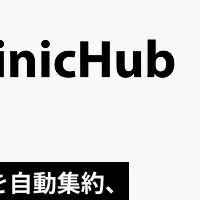
The Rise of Digital Stethoscopes: Transforming Diagnostics and Healthcare Delivery
The Emergence of Digital Stethoscopes in Modern Healthcare
In recent years, the healthcare landscape has undergone significant transformations, driven by advancements in technology. One area that has particularly benefited from innovation is the stethoscope—a tool that has remained relatively unchanged for decades. As of 2025, the global market for digital stethoscopes is valued at approximately $0.49 billion, and it is expected to grow to $0.71 billion by 2032, according to a report by MarketsandMarkets. This robust growth is attributed to several factors, including the rising incidence of chronic cardiovascular and respiratory diseases, an increase in telemedicine, and a burgeoning demand for remote patient monitoring (RPM).
Digital stethoscopes are not just modernized versions of their analog counterparts; they represent a pivotal shift in how patients are diagnosed and monitored. These innovative devices leverage technology to enhance sound clarity, reduce background noise, and offer AI-powered diagnostic capabilities, thus providing clinicians with precise auscultation data whether in urban clinics or rural settings.
Key Drivers of Market Growth
The increasing prevalence of chronic illnesses is one of the primary catalysts for the growth of digital stethoscopes. Conditions such as heart disease and respiratory issues require regular monitoring. As hotbeds for these diseases emerge, healthcare systems worldwide face mounting pressure to adapt and innovate. Digital stethoscopes uniquely address challenges posed by the traditional system, allowing for improved patient management, better care accessibility, and prompt diagnostic accuracy.
Furthermore, as healthcare shifts away from centralization towards more decentralized models, the integration of digital stethoscopes into clinical practices becomes essential. Telemedicine is at the forefront of this transition, where doctors rely on real-time data to make informed decisions about patient care. This evolving paradigm necessitates tools that offer both flexibility and precision, which digital stethoscopes fundamentally provide.
Technological Advancements in Digital Stethoscopes
An array of features positions digital stethoscopes as clinical game-changers. For example, models such as the Eko Health CORE 500 boast enhanced sound amplification, ECG integration, and even Bluetooth/Wi-Fi connectivity for seamless transmission of data. Such technology allows clinicians to make assessments without the limitations imposed by traditional devices. AI-powered diagnostics are revolutionizing how heart and lung conditions are screened, enabling accurate assessments that were previously unattainable without specialized training.
Bridging Healthcare Gaps
Digital stethoscopes are significantly improving healthcare access, particularly in underserved regions. They facilitate RPM and telehealth services, which are vital for delivering care to those without easy access to clinics or hospitals. Instant recording capabilities and wireless sharing streamline clinical workflows, enabling better time management for healthcare providers and enhancing the overall patient experience.
The adoption of these devices is accelerating in emerging markets, spurred on by supportive government initiatives and public-private partnerships that aim to integrate electronic health records within the teleconsultation framework. Notable efforts such as India's Ayushman Bharat Digital Mission are paving the way for the proliferation of digital stethoscopes, bridging the gap between urban medical expertise and rural patient needs.
The Key Players in the Market
Top industry players like Solventum, Eko Health, Inc., and Thinklabs are at the forefront, utilizing AI, IoT, and cloud connectivity to enhance their stethoscope offerings. As regional players like HD Medical and Linktop expand their capabilities, innovation remains aggressive and competitive.
Challenges and Solutions
Despite the positive trends, affordability and accessibility are principal obstacles to widespread digital stethoscope adoption. The cost of advanced models can be prohibitive for healthcare institutions in low-resource regions, equating to one to three months’ salary for many providers. Moreover, reliance on battery-powered devices introduces potential complications in areas with inconsistent electricity supply.
Addressing these barriers requires innovations in design, focusing on affordability without sacrificing function. Developing rugged, low-cost models and exploring alternative power solutions will encourage broader adoption.
Looking Ahead
As healthcare shifts inevitably towards a more integrated, digital-first approach, questions surrounding the adoption of digital stethoscopes become critical. Healthcare leaders must begin to consider how best to leverage these tools within their existing RPM and telemedicine frameworks and the potential return on investment for rural deployments.
Conclusion
The advent of digital stethoscopes symbolizes a significant leap in medical diagnostics and patient care. By merging traditional auscultation with cutting-edge data systems, they set new standards for precision in medicine. As we move forward into an increasingly connected healthcare environment, these sophisticated diagnostic tools will undoubtedly play a pivotal role in enhancing both the quality and accessibility of care.
Topics Health)










【About Using Articles】
You can freely use the title and article content by linking to the page where the article is posted.
※ Images cannot be used.
【About Links】
Links are free to use.